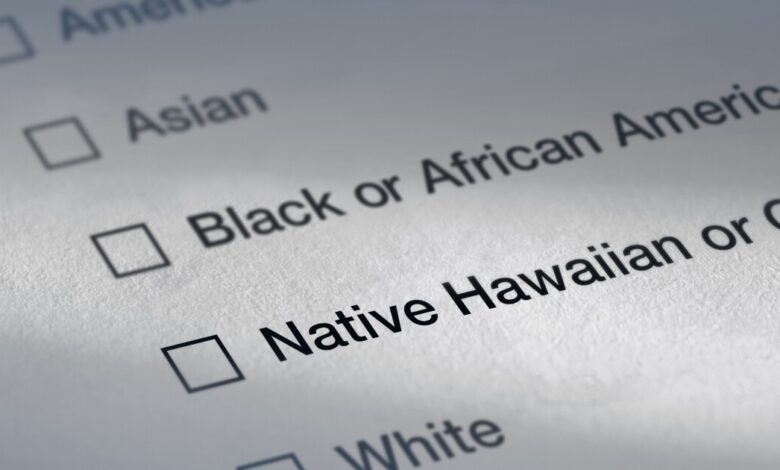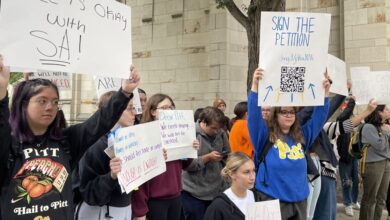SFFA Urges Colleges to Shield ‘Check Box’ Data About Race From Admissions Officers

[ad_1]
The Supreme Court outlawed the use of race in admissions last month, but the scrutiny of colleges’ responses to the landmark ruling is just beginning.
Students for Fair Admissions made that clear on Tuesday when it sent a stern letter to 150 public and private colleges citing several passages from the court’s majority opinion, including its emphasis that the law requires “color-blind” admissions practices: “It is therefore incumbent upon your institutions to ensure compliance with this decision.”
The letter, which was signed “Sincerely yours,” by Edward Blum, SFFA’s founder, instructed colleges to take four specific actions. One was to stop making “check box” data about applicants’ race available to admissions officers.
You remember the check box, right? It came up again and again during oral arguments last fall. Lawyers for SFFA argued that admissions officers shouldn’t be able to consider which box applicants check on applications to note their race and ethnicity. The consideration of “race by itself,” one of those lawyers told the court, was unlawful. And in the end, the court’s majority agreed with that.
But does that mean colleges now must remove the check box from their admissions applications?
Art Coleman, co-founder and managing partner at EducationCounsel LLC, was asked that question during The Chronicle’s recent webinar about the implications of the court’s ruling. “Nothing should stop an institution from collecting the information,” he said. “There’s just nothing in the opinion that suggests that. … There are important reasons to take that data and evaluate it for educational purposes that affect all students. The question, legally, is: How are you using that information in the context of making decisions about whether a student is admitted or not?”
EducationCounsel, a consulting firm that advises colleges on legal issues, has published a working draft of its preliminary guidance on complying with the court’s decision. “The mere collection of disaggregated data based on race and ethnicity should remain as a viable, lawful practice,” it said.
That guidance also included the following: “It is important to segregate such collection practices from any effort to monitor class composition in real time with respect to rolling or other admissions practices, by which awareness of evolving class racial composition might influence the admissions decisions being made. In other words, maintain a clear separation between information accessible to those who are building an applicant pool and those involved in the individual applicant decision-making process.”
The check box is a powerful symbol. It has long figured prominently in the debate over race-conscious admissions. Critics of the practice, either in ignorance or a willful attempt to mislead, have helped popularize the widely held notion that underrepresented minority applicants gained admission to highly selective colleges merely by checking a box to indicate their race. But in holistic evaluations of applicants, race was one of many factors colleges considered — and just one.
The check box has remained a subject of considerable attention as colleges prepared to adjust their practices in anticipation of the court’s decision. This spring, the Common Application, the online platform used by more than a million students each year to apply to college, announced that it would allow its 1,000-plus member institutions to hide information about students’ race and ethnicity starting in August, but applicants may still choose to answer those voluntary questions. Member colleges already can hide information about an applicant’s birthday, gender, Social Security number, and test scores.
The court’s ruling has prompted confusion about the purpose of the check box now that colleges can’t consider an applicant’s race. “It’s a confusing issue because the assumption is that if it’s there, people will use it” in admissions decisions, said W. Carson Byrd, an associate research scientist at the Center for the Study of Higher and Postsecondary Education at the University of Michigan at Ann Arbor. “So the question people have is: If you don’t use it, then why do you need it?”
But that demographic data has many uses beyond evaluations of applicants for admission. “It’s helpful for understanding who’s applying,” said Byrd, who described the importance of such data in an op-ed for the Times Higher Education on Wednesday. “If we start to see a dramatic decrease in in-state students who are Black and Latino, there are going to be questions about what it was that made them decide that this wasn’t the place for them. These are really important kinds of questions. If you don’t have basic data about who these students are, you can’t really make any adjustments, you can’t make any programmatic changes or policy changes.”
This is what their endgame is — to literally get rid of data on race.
Some admissions officials on Wednesday privately described SFFA’s letter as an attempt to bully and intimidate colleges into making changes that the court’s decision doesn’t necessarily compel them to make. The letter also instructed colleges “to prohibit your admissions office from preparing or reviewing any aggregated data (i.e., data involving two or more applicants) regarding race or ethnicity; eliminate any definition or guidance regarding ‘underrepresented’ racial groups; promulgate new admissions guidelines that make clear race is not to be a factor in the admission or denial of admission to any applicant.”
When asked via email if a specific incident or concern had prompted the letter, Blum wrote: “It’s common in various legal settings.”
No one should mistake SFFA’s letter for a list of legal commandments handed down from on high. Later this summer, the U.S. Education Department plans to issue federal guidance for complying with the court’s ruling. That document will provide specific advice on how colleges should adjust institutional practices to meet new race-neutral requirements.SFFA’s letter, on the other hand, was a growl from one of higher education’s self-appointed watchdogs.
But Byrd saw a deeper implication in what the group wrote. “This is what their endgame is — to literally get rid of data on race,” he said. “If we know that we have a lot of racial inequality, one of the ways we know whether something is getting better or worse is being able to have this kind of data. So, really, this is meant to undercut the ability to make policy changes or cultural changes. You can’t point at something if you don’t have the data. That is their ultimate goal: to prevent people from pointing out that systemic racism is still an everyday reality for people.”
[ad_2]
Source link






